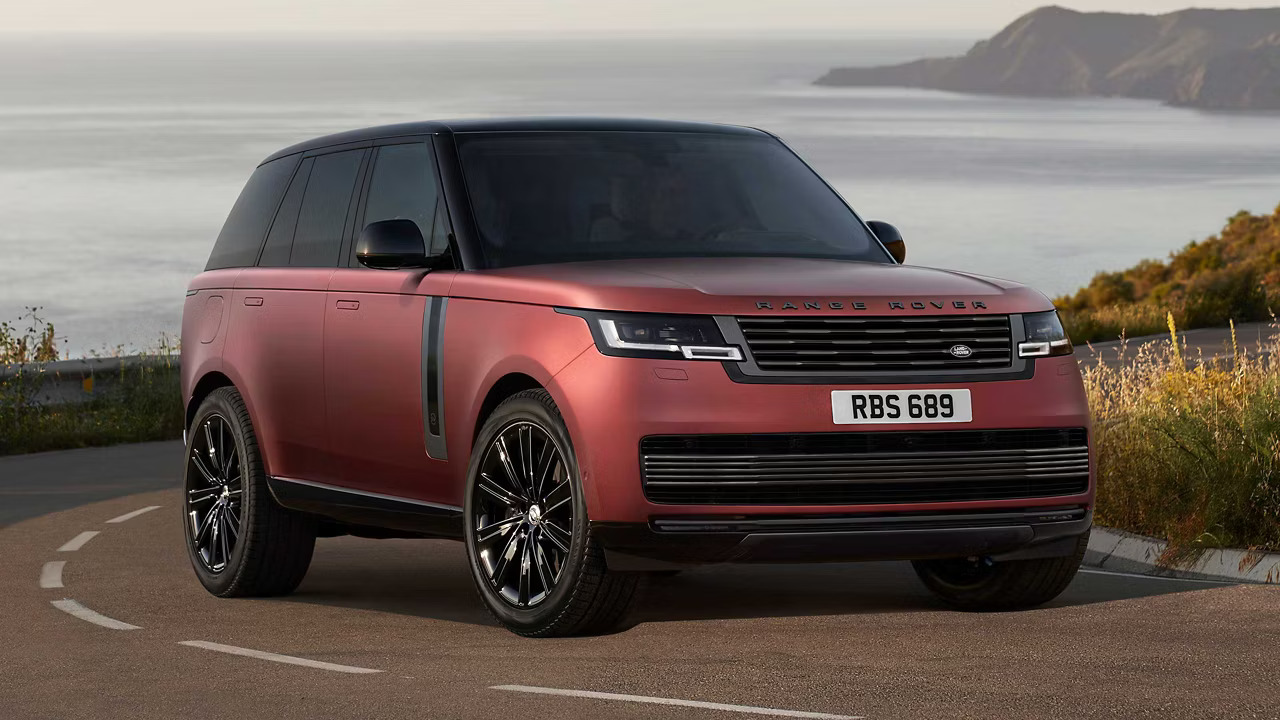Luxury SUVs offer the best of both worlds—premium comfort and commanding performance. They appeal to a wide audience: families seeking space and safety, executives who value style and status, and adventurers looking for capability wrapped in refinement.
But not all luxury SUVs are created equal. While some provide a decade or more of reliable service with minimal issues, others are plagued with nagging problems, expensive repairs, and disappointing durability. When investing in a high-end vehicle, it’s not just the features that matter—it’s how the vehicle holds up over time.
Luxury SUV buyers often assume that a higher price tag guarantees superior quality, but real-world ownership tells a different story. Some of the most expensive models are also among the least dependable, thanks to complex electronics, over-engineered systems, or poor-quality components.
These issues become more pronounced as vehicles age and warranties expire. On the flip side, certain luxury SUVs buck the trend by delivering solid performance year after year with minimal fuss. These models combine premium design with robust engineering, giving their owners both the elegance they want and the longevity they need.
This article highlights five luxury SUVs known for lasting a decade or more with relatively few mechanical issues, proving themselves to be long-term investments that can handle both daily driving and aging gracefully.
In contrast, we’ll also cover five notoriously unreliable models, requiring frequent visits to the shop and often becoming money pits after the warranty period.
Whether you’re looking to purchase new or used, this breakdown will help you make a smarter decision about which luxury SUV is more than just a pretty face, and which ones are best avoided if you value peace of mind.
Luxury SUVs That Last a Decade
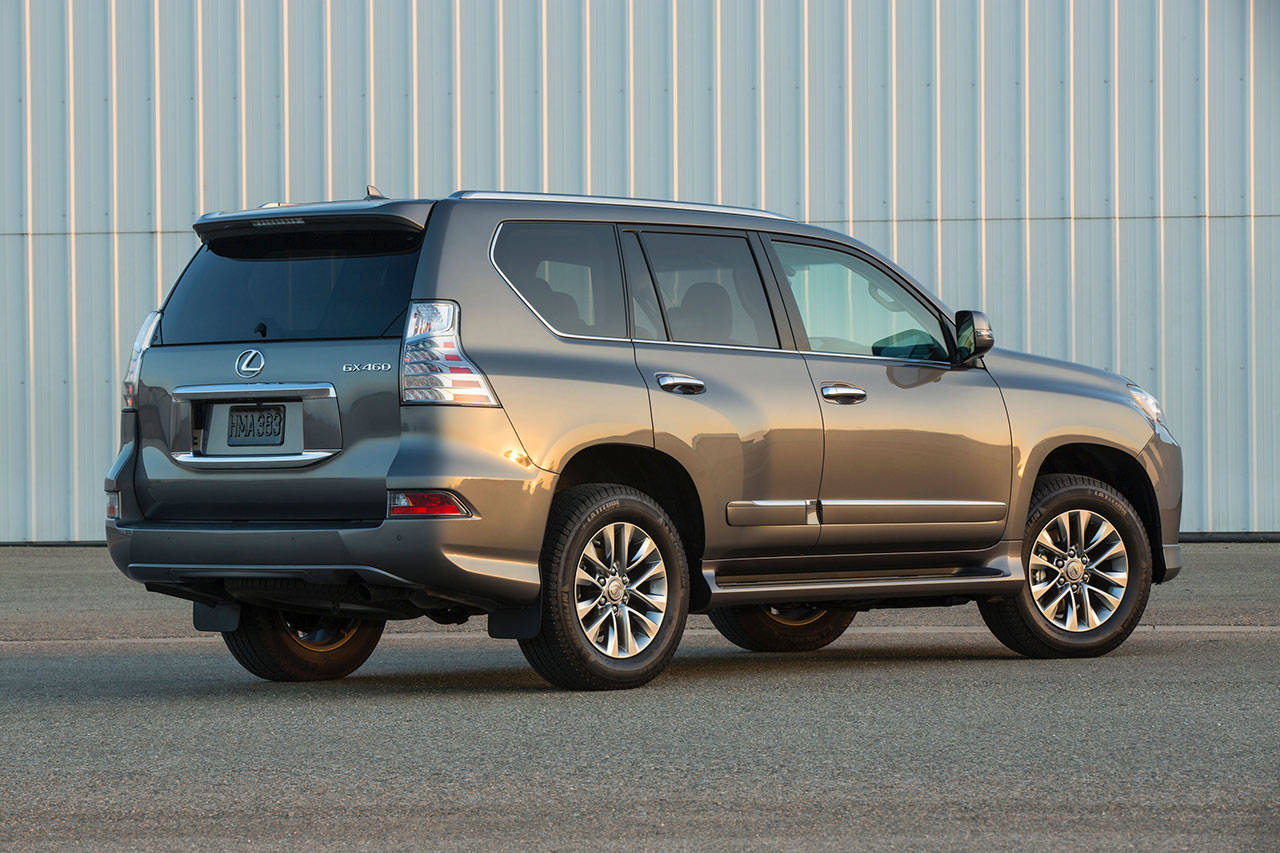
1. Lexus GX 460
The Lexus GX 460 is a legend when it comes to long-term reliability in the luxury SUV market. Sharing its rugged underpinnings with the Toyota Land Cruiser Prado, the GX is more than just a plush family hauler—it’s a serious, body-on-frame SUV built for durability.
Powered by a naturally aspirated 4.6-liter V8, it delivers dependable performance year after year, avoiding the complexity of turbochargers or plug-in hybrid systems that often lead to costly repairs in other luxury brands.
Its reputation for lasting well beyond 200,000 miles makes it a rare gem in a market full of overengineered alternatives.
One of the main reasons the GX 460 stays on the road so long is its commitment to time-tested engineering. Rather than chasing trends with radical redesigns, Lexus has stuck to what works.
The drivetrain is simple and robust, and the vehicle has excellent parts availability, making repairs affordable and straightforward if they do arise.
Owners praise the vehicle for rarely leaving them stranded and for requiring fewer unexpected repairs than German or American luxury competitors. With proper maintenance, it’s not unusual for a GX to hit 15 years with minimal mechanical complaints.
Its interior, while not flashy or ultra-modern, is built to last. High-grade materials, ergonomic design, and real-world comfort make the cabin feel upscale without sacrificing practicality. The infotainment system, although outdated by some standards, is easy to use and reliable.
The layout avoids the tech overload found in other luxury SUVs, where touchscreen failures or software glitches can cost thousands to fix. This back-to-basics reliability extends to the suspension system, which holds up well over time, especially in trims without the optional air suspension.
The GX also commands excellent resale value, which is a reflection of its durability and desirability on the used market. Even high-mileage examples fetch strong prices because buyers know they’re getting a vehicle that still has life left in it.
For luxury buyers who care more about quality and longevity than bleeding-edge tech, the Lexus GX 460 is a nearly unbeatable choice that stands tall even after a decade of ownership.
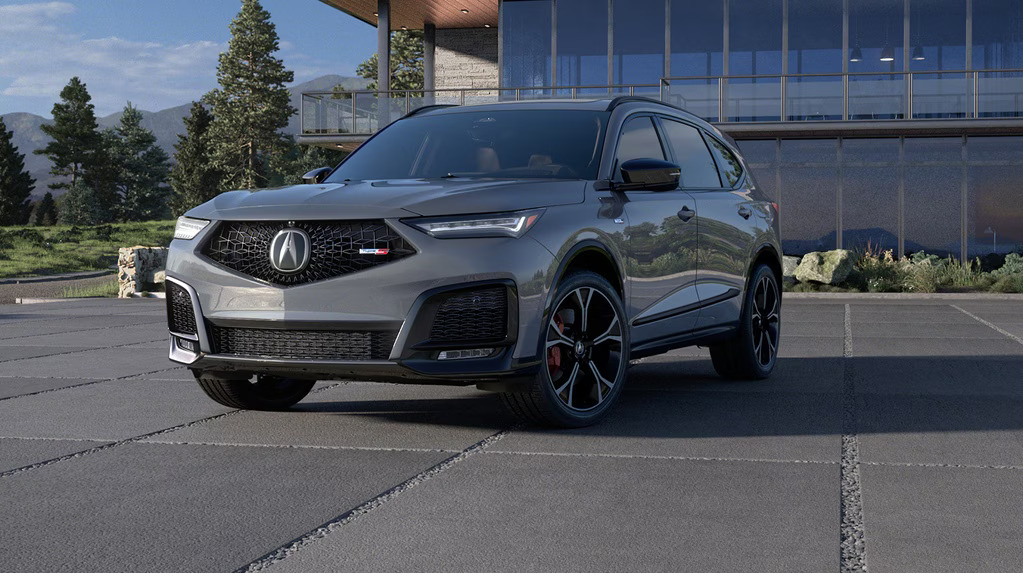
2. Acura MDX
The Acura MDX has quietly become one of the most reliable and practical luxury SUVs available. With a heritage rooted in Honda engineering, the MDX blends performance and refinement with a level of long-term durability that most European brands can’t match.
It’s a popular choice for families, commuters, and even retirees who want upscale features without the worry of frequent repairs. Over the years, the MDX has earned a loyal following, thanks to its ability to exceed 200,000 miles when properly maintained.
What sets the MDX apart is its proven 3.5-liter V6 engine, which delivers strong performance and excellent longevity. This engine has seen minimal changes over the years, largely because it works so well. It’s paired with a responsive automatic transmission and available SH-AWD (Super Handling All-Wheel Drive), giving the vehicle confident handling in all conditions.
Unlike many competitors, Acura avoids over-complicating the drivetrain with finicky turbochargers or unreliable dual-clutch setups, which helps minimize long-term mechanical headaches.
Interior quality is another area where the MDX excels. While some years featured a dual-screen infotainment system that drew criticism for its learning curve, the system is generally reliable and ages better than the buggy, overly digital dashboards found in many European SUVs.
Cabin materials are premium and stand up to wear, even with family use. Additionally, the MDX’s comfortable ride, spacious three-row seating, and straightforward controls make it a strong contender for those looking to keep their vehicle for the long haul.
Where the MDX really shines is in total cost of ownership. Not only is it cheaper to maintain than most of its rivals, but it also depreciates more slowly than other luxury SUVs in its class.
This combination of low repair frequency, long lifespan, and affordable upkeep makes the MDX a standout in the luxury segment. It’s an SUV that you can confidently own for a decade or more without the sense of dread that often accompanies aging European models.
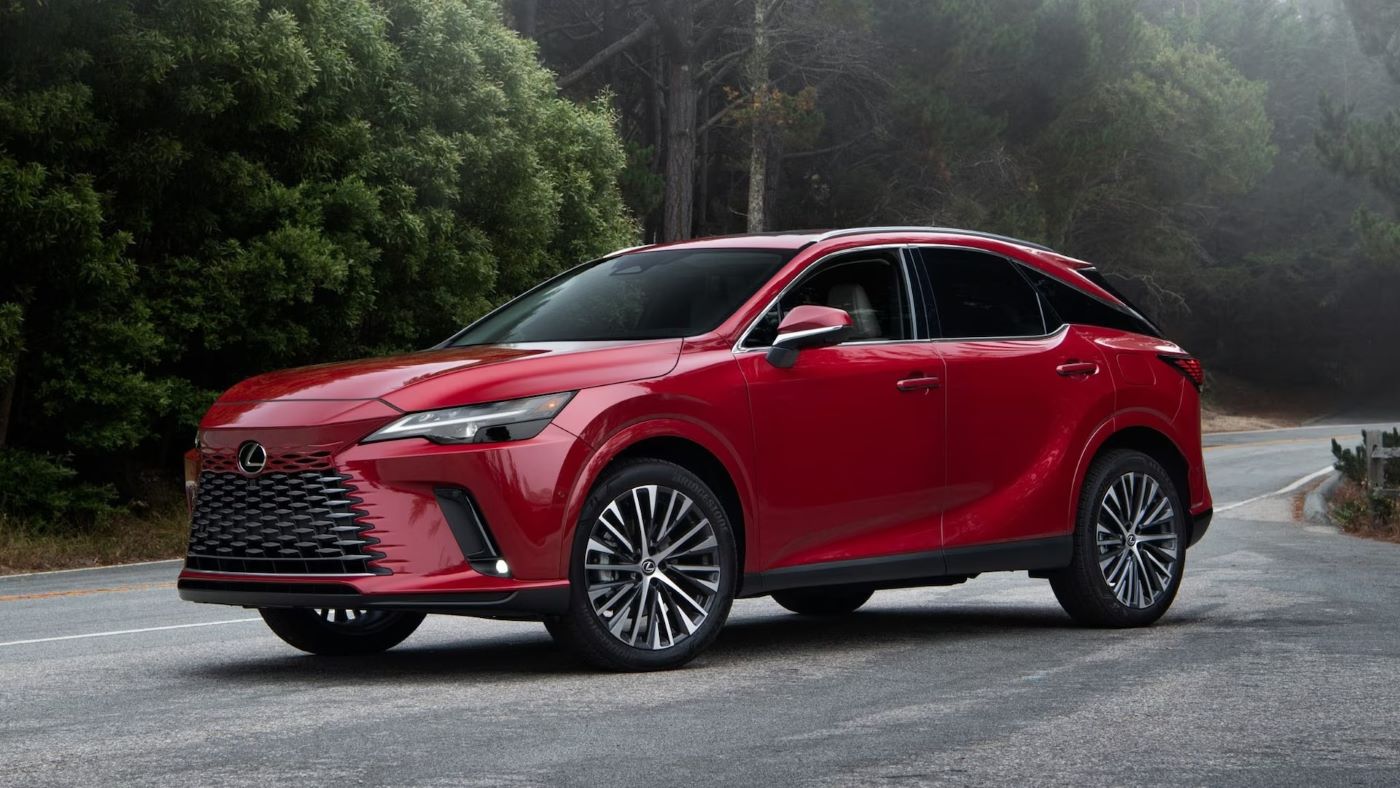
3. Lexus RX 350
The Lexus RX 350 is the gold standard for dependable midsize luxury SUVs. For over two decades, it has been a favorite among owners who value comfort, quietness, and longevity.
Powered by Toyota’s rock-solid 3.5-liter V6 engine and a conventional automatic transmission, the RX avoids the complexity that drags down many of its competitors. This tried-and-true formula leads to minimal unscheduled repairs and outstanding long-term reliability.
The RX’s build quality is evident in both its mechanical systems and cabin finish. From the undercarriage to the dashboard stitching, everything feels engineered for endurance. Lexus takes a conservative approach to design updates, which keeps the mechanical systems well-proven and refined over time.
The result is a vehicle that rarely surprises its owners with expensive fixes or unexplained failures. Even high-mileage RX models tend to remain mechanically sound, which makes them popular on the used market.
Inside, the RX 350 is quiet, refined, and designed to age well. The seats are comfortable, the cabin is spacious, and all controls are intuitive. Though not overloaded with high-tech gimmicks, the RX delivers a luxurious experience through craftsmanship and simplicity.
Many luxury vehicles start showing electronic glitches or worn materials after five to seven years, but in the RX, it’s common to find 10-year-old models that still feel fresh and function like new.
With lower-than-average maintenance costs and excellent resale value, the RX 350 proves that luxury doesn’t have to mean fragile or costly. It appeals to a wide demographic, from families to empty nesters, and its reliability record is one of the best in the industry. If you want a luxury SUV that will faithfully serve you for a decade or more, the RX 350 is the definition of peace of mind.
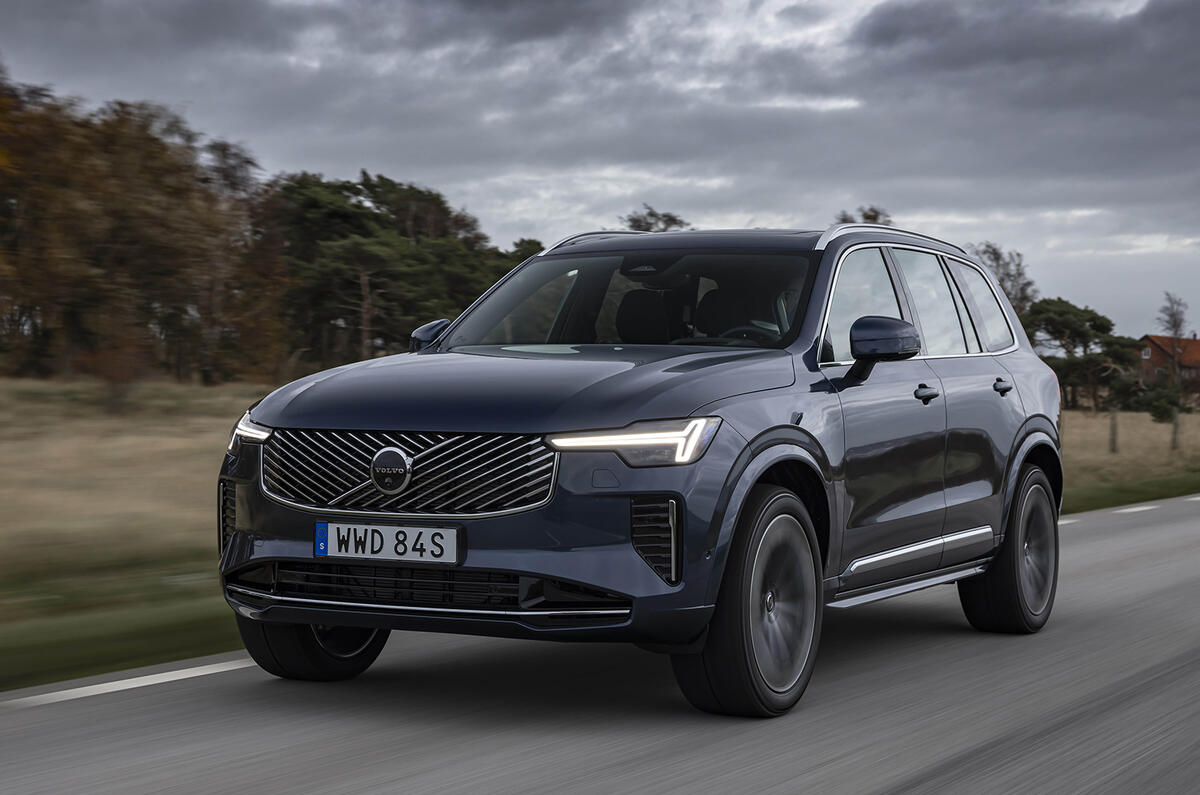
4. Volvo XC90 (Post-2016 Refresh)
The Volvo XC90, particularly in its post-2016 form, strikes an excellent balance between modern Scandinavian luxury and long-term usability.
While older Volvo models had a reputation for being finicky, the redesigned XC90 turned the brand’s image around, offering sleek aesthetics, advanced safety, and strong dependability in one stylish package.
Owners who commit to proper maintenance are often rewarded with an SUV that easily exceeds the 10-year mark while still feeling modern and premium.
Volvo’s focus on safety and longevity is baked into the XC90’s DNA. The engines—particularly the T6 and later B6 mild-hybrid variants—have proven surprisingly reliable for turbocharged powertrains, thanks in part to Volvo’s conservative tuning and engineering focus.
The transmission and AWD system are similarly well-calibrated, reducing mechanical stress over time. The vehicle’s safety systems, though advanced, are more stable and less glitch-prone than those in many German competitors.
Inside, the XC90 exudes modern luxury without being over-complicated. The materials—natural wood, soft leather, and high-grade plastics—stand up well to wear. Volvo’s Sensus infotainment system has a learning curve but is generally stable once updated, and the lack of dozens of physical buttons actually contributes to long-term usability by reducing component failure.
Seat comfort is best-in-class, and many owners comment on how “new” their XC90 still feels even after several years of ownership.
What sets the XC90 apart from most competitors is its blend of understated elegance and practicality. It’s not a flashy status symbol, but it’s a vehicle designed with thoughtful attention to both detail and durability.
Maintenance costs are moderate, not as low as Lexus’s, but significantly more reasonable than German luxury brands ‘, and independent shops can often handle non-warranty service. For buyers seeking long-term value in a stylish European SUV, the post-2016 XC90 is a surprisingly strong pick.
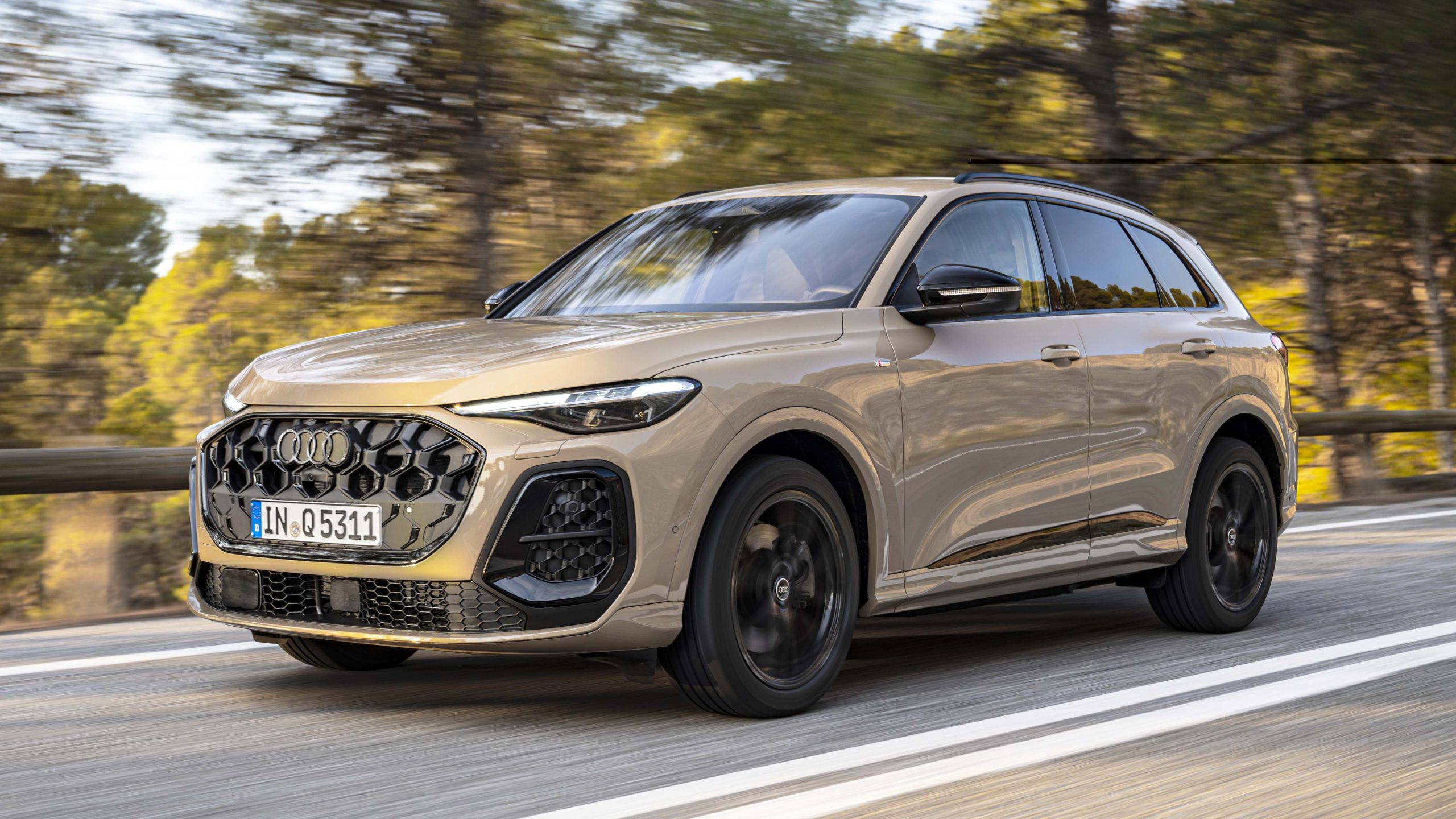
5. Audi Q5 (with 2.0T Engine, 2018+)
Audi is not typically the first brand that comes to mind for longevity, but the Q5, particularly from 2018 onward, has quietly become one of the most dependable compact luxury SUVs on the market.
Equipped with the updated 2.0-liter turbocharged engine and refined Quattro all-wheel-drive system, the Q5 has shed many of the reliability concerns that plagued earlier models. Properly maintained, these newer Q5s can go 150,000–200,000 miles or more with relatively few issues.
Part of the Q5’s success lies in its simplicity relative to other Audis. It doesn’t overreach with unnecessary gadgets or controversial styling changes, focusing instead on tight build quality, proven mechanicals, and refined driving dynamics.
The 2.0T engine is both efficient and robust when serviced at regular intervals, and the transmission tuning has improved dramatically since the early 2010s. Audi has also made strides in reducing oil consumption and electronic quirks, which historically damaged the brand’s long-term image.
Interior quality is excellent, as one would expect from Audi. Materials are soft-touch, the design is elegant, and the cabin feels premium even after years of use. The MMI infotainment system is reliable and intuitive, with fewer bugs and lag compared to rivals.
While it’s a compact SUV, the Q5 is well-suited for small families or professionals who need luxury without bulk. Owners frequently report minimal rattles, wear, or system failures even at the 100,000-mile mark.
Routine maintenance is key with the Q5, but costs are not excessive compared to BMW or Mercedes counterparts. With regular oil changes, fluid flushes, and timing-related service, the vehicle holds up well.
Used examples in good condition remain in high demand, and depreciation is slower than expected in the premium compact segment. For buyers looking for an upscale, long-lasting SUV with European flair, the 2018+ Q5 is a surprisingly reliable bet.
Luxury SUVs That Constantly Need Fixes
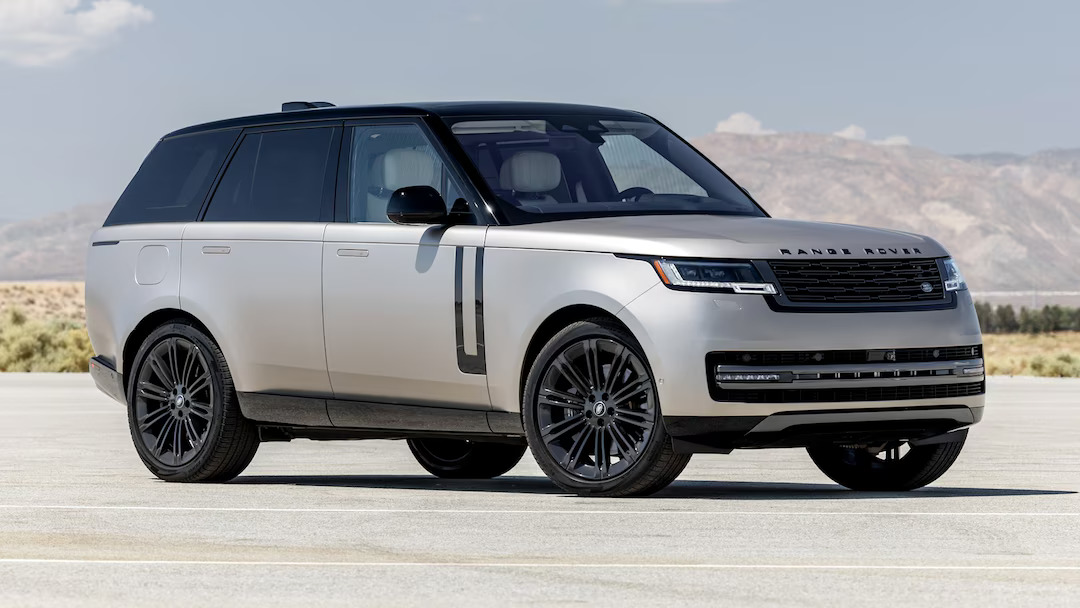
1. Land Rover Range Rover (2013–2021)
Few vehicles symbolize luxury and prestige quite like the Range Rover, but beneath that glamorous exterior lies one of the most problem-prone SUVs on the market. While the Range Rover delivers unmatched presence, advanced off-road tech, and a sumptuously appointed cabin, it’s also infamous for its unreliability, especially once it reaches the 5-year mark.
Owners frequently report chronic issues with air suspension components, infotainment glitches, and drivetrain inconsistencies. Despite its high purchase price, the cost of keeping a Range Rover on the road over a decade can be overwhelming.
Air suspension failures are a notorious weak spot. While they provide a plush ride and height adjustability, the components—especially compressors and airbags—often wear prematurely. Once the suspension begins to sag or throw warning lights, repairs can easily climb into the thousands.
Worse yet, some owners report replacing these components multiple times over the life of the vehicle. Combine that with issues in the Terrain Response System, drivetrain calibration, and rear differential leaks, and it becomes clear why extended warranties are almost a necessity for these models.
The complexity of the technology inside the cabin also contributes to its maintenance nightmare. The dual-screen infotainment system can be glitchy, slow, or simply stop functioning, and many dealers struggle to fix these problems even after multiple visits.
Add in phantom warning lights, Bluetooth failures, and climate control malfunctions, and you have a frustrating ownership experience that detracts from the luxury image. These issues tend to become more frequent and less fixable as the SUV ages—precisely when most vehicles should be settling into reliability.
Then there’s the cost of ownership. Maintenance and repairs are some of the most expensive in the segment, not just because of the price of parts but also due to limited mechanic familiarity and diagnostic challenges.
Land Rover dealerships often charge a premium for labor, and even minor issues can lead to lengthy service appointments. Despite all this, the Range Rover remains popular, but only among those willing to treat it as a short-term indulgence rather than a long-term companion.
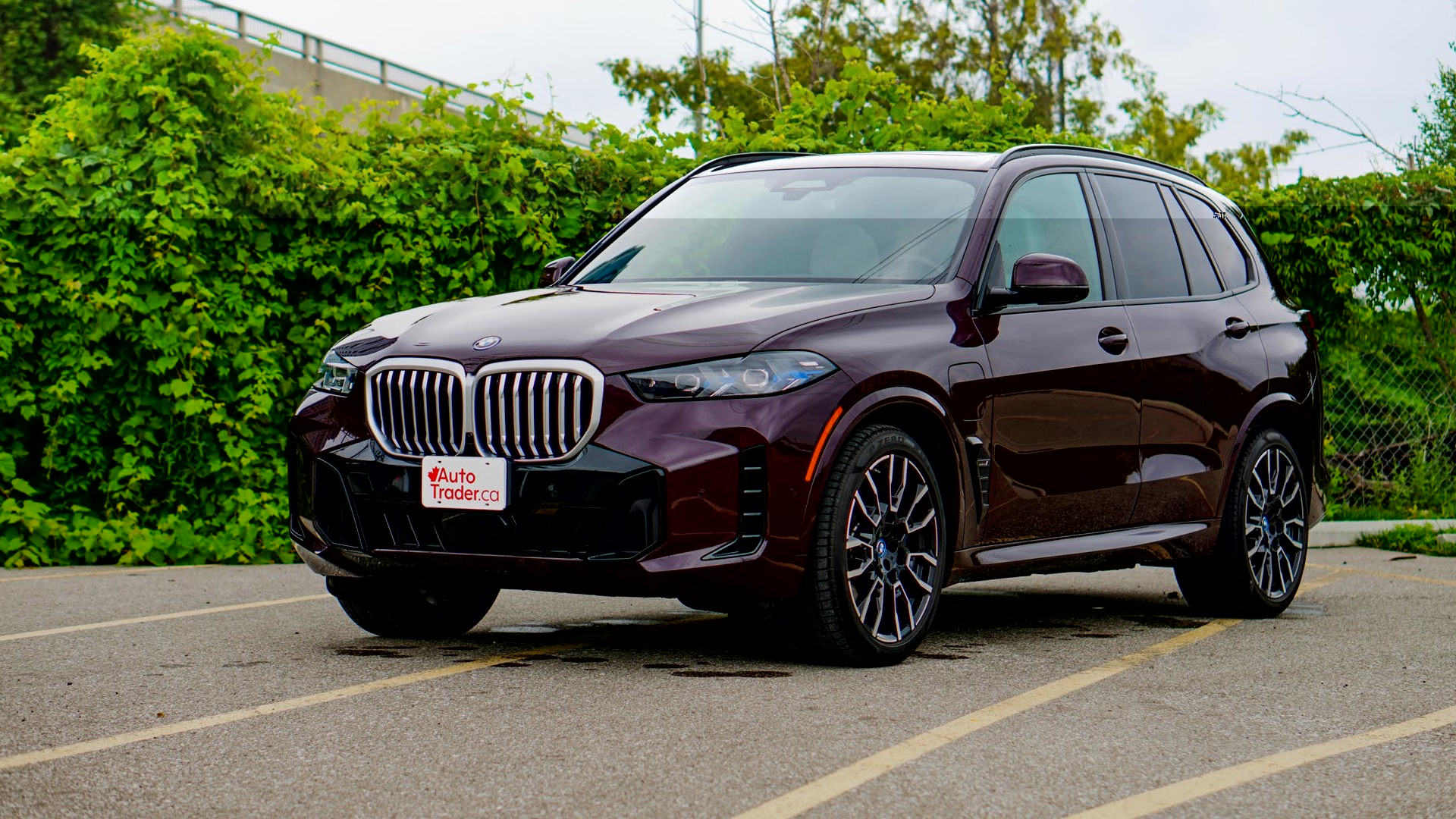
2. BMW X5
The BMW X5 is an SUV that blends athletic performance with luxury appeal, but when it comes to long-term dependability, it consistently disappoints. Models from the early 2010s through 2018 have developed a reputation for reliability issues, particularly once they cross the 80,000-mile threshold.
Though fun to drive and refined when new, the X5 often becomes a burden as it ages, thanks to complex electronics, turbocharged engine problems, and costly transmission failures. What starts as a premium driving experience can quickly spiral into an expensive repair cycle.
Engine issues are particularly common, especially with the turbocharged inline-six and V8 variants. Oil leaks from the valve cover and oil filter housing are routine, and many owners report timing chain problems on earlier models.
Turbochargers can also fail, leading to power loss or smoking, and these repairs are neither quick nor cheap. Cooling systems—already a weak spot in many BMWs—are prone to failure here as well, and if not addressed quickly, they can lead to catastrophic engine damage.
Electronics and comfort features are another sore point. The iDrive system, while advanced for its time, has been plagued by software bugs, freezing, and screen failures. Power tailgates often malfunction, driver assistance systems can become unresponsive, and window regulators are a frequent failure item.
As these systems age, repair costs multiply quickly, especially when multiple components fail in tandem. The luxury experience quickly erodes when features that once worked flawlessly begin to fail intermittently or stop working altogether.
Maintenance costs are among the highest in the midsize luxury SUV category. Parts are expensive, labor costs are steep, and many common fixes require removing multiple major components to access the problem area. Extended ownership of an older X5 often requires deep pockets or DIY mechanical skill.
While the latest generation (post-2019) has shown some improvement in quality, earlier X5 models remain cautionary tales about the cost of high-tech German engineering without long-term durability.
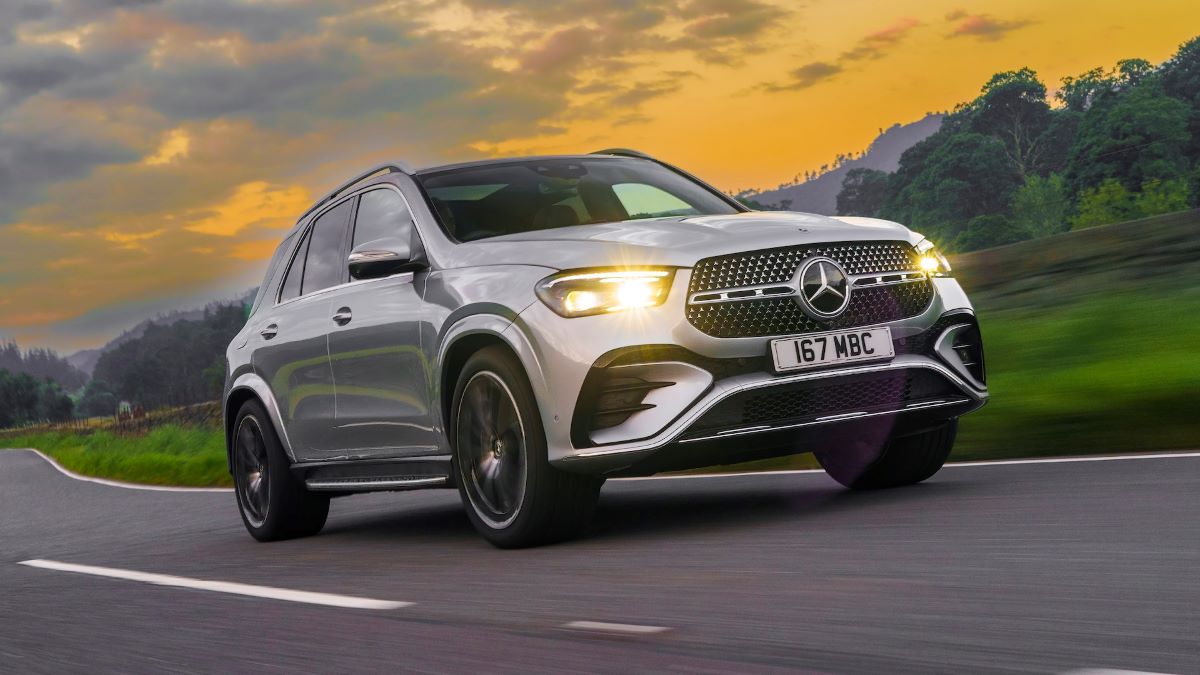
3. Mercedes-Benz GLE-Class (Formerly M-Class, 2012–2019)
The Mercedes-Benz GLE, and its predecessor, the M-Class, present themselves as a luxurious, feature-rich SUV, but long-term owners often find themselves battling constant repairs. These models, especially from 2012 to 2019, suffer from a wide range of problems, including suspension issues, engine trouble, and notorious electrical gremlins.
While the GLE is a comfortable and stylish ride with the cachet of the Mercedes badge, it’s also a minefield of mechanical complexity that rarely stands up to a decade of real-world use without major intervention.
Air suspension issues are a frequent problem on GLEs equipped with AIRMATIC. Owners regularly report sagging rear ends, compressor failures, and complete system malfunctions that compromise ride quality and safety.
Replacing or repairing the AIRMATIC system can cost thousands of dollars, and it’s not uncommon for it to fail more than once during the vehicle’s lifespan. Non-air suspension models fare slightly better, but other chassis-related issues like premature bushing wear and brake system failures remain common.
Engine reliability varies depending on the trim, but many models—especially those with twin-turbocharged V6s or V8s—suffer from oil leaks, timing chain tensioner failures, and poor cooling system longevity. Diesel variants also experience frequent DEF system and emission-related issues, further complicating long-term ownership. Combined with a transmission that sometimes hesitates, shudders, or fails in high-mileage examples, the GLE often becomes a luxury money pit past its warranty period.
Adding insult to injury, the interior electronics can be maddening. From malfunctioning infotainment systems and faulty seat controls to backup cameras that stop working and random warning lights, the GLE often feels less like a modern marvel and more like a troubleshooting exercise.
Mercedes dealerships charge a premium for diagnostics and repairs, and even minor fixes can balloon into thousands of dollars when labor hours stack up. It’s a sleek and impressive SUV on the surface, but under the hood and behind the dash, it’s a vehicle that rarely ages gracefully.
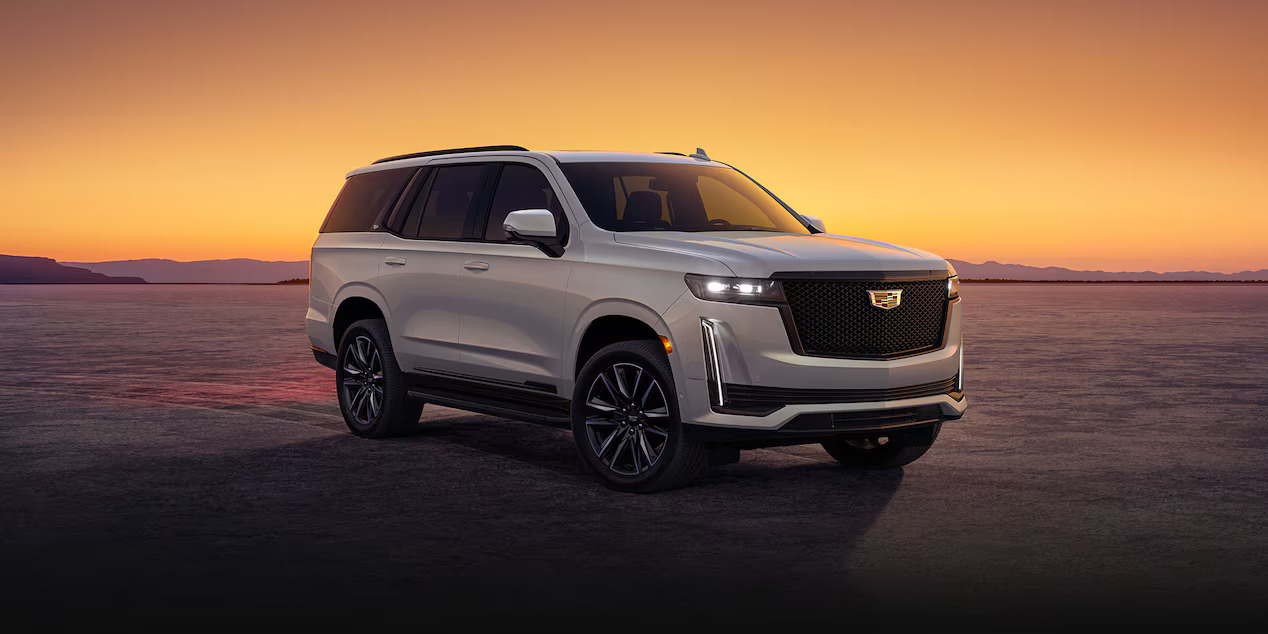
4. Cadillac Escalade (2015–2020)
The Cadillac Escalade is an American luxury icon known for its size, presence, and bold styling. However, when it comes to reliability and long-term dependability, it leaves much to be desired.
While newer models offer cutting-edge technology and impressive powertrains, Escalades from the 2015 to 2020 model years have shown a pattern of mechanical and electronic problems that frustrate owners and drag down long-term satisfaction. Despite its strong resale value, the Escalade often demands frequent repairs and expensive fixes as it ages.
One of the most common issues in this generation involves the transmission. The 8-speed automatic in particular has been plagued by jerky shifts, hesitation, and complete failures in some cases. GM eventually issued a service bulletin and offered a fluid flush and reprogramming, but the problem persisted for many.
Additionally, engine issues—such as lifter failure in the 6.2-liter V8—can lead to expensive repairs and extensive downtime. These problems erode trust in what should be a top-tier American SUV.
The Escalade’s air suspension system is another pain point. While it offers excellent ride comfort when functioning correctly, it’s highly prone to leaks, compressor failure, and component degradation over time. Fixing the system is expensive, and many owners report recurring problems even after replacement. These suspension issues can also lead to poor ride height and uneven tire wear, compounding the vehicle’s long-term maintenance costs.
Interior tech is also a mixed bag. Cadillac’s CUE infotainment system, while sleek and modern in design, is widely criticized for being unresponsive and failure-prone. Touch-sensitive controls often stop working, the screen can delaminate, and software glitches are common.
When combined with less-than-stellar build quality in the cabin trim and hardware, the Escalade starts to feel less like a luxury vehicle and more like a frustrating experiment in overdesign. It may look and feel impressive for the first few years, but owning it beyond the warranty period is often a gamble.
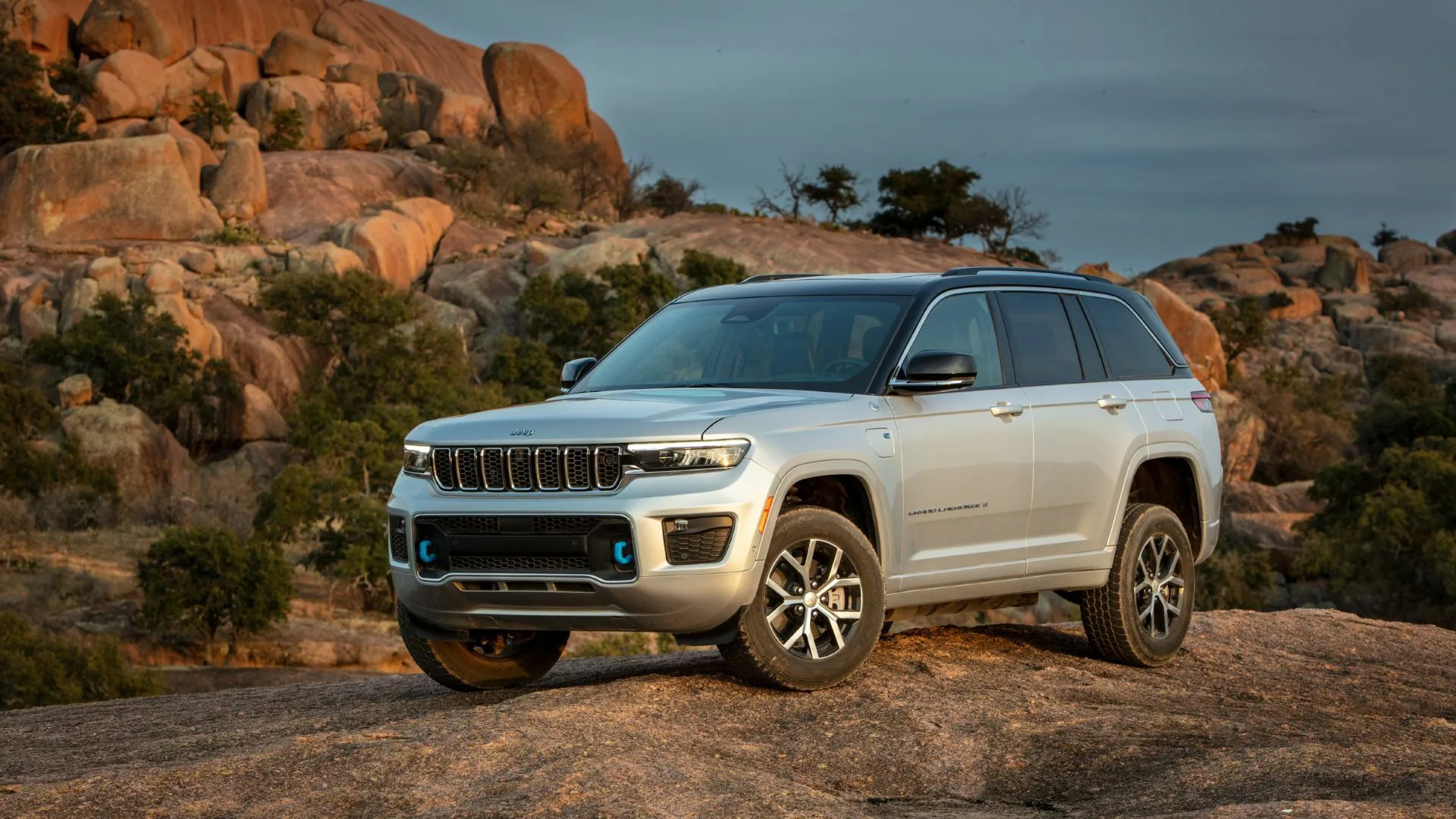
5. Jeep Grand Cherokee (2011–2020 Summit/Overland trims)
The Jeep Grand Cherokee, especially in its higher trims like the Summit and Overland, tries hard to play in the luxury space, but often falls short when it comes to lasting quality.
While base models are relatively robust, the fully loaded versions are packed with complicated tech and premium features that simply don’t hold up over time. From air suspension woes to electrical gremlins and spotty transmission performance, the Grand Cherokee becomes a risky proposition after 5 or 6 years of ownership.
One of the most notorious problems in higher trims is the Quadra-Lift air suspension system. Though it provides adjustable ride height and comfort, it is highly susceptible to leaks, compressor burnout, and sensor failures.
Owners frequently find their Grand Cherokees squatting in the driveway, sometimes unevenly, and repairs are costly. Worse still, replacements are sometimes faulty out of the box, leading to repeat issues that frustrate even the most patient drivers.
Drivetrain and transmission problems also plague certain models. The 8-speed automatic is generally praised for performance but suffers from shuddering, delayed shifts, and complete failure in some units.
Additionally, the 5.7L V8 and EcoDiesel engines have seen their share of problems, from camshaft wear to DEF system errors and excessive oil consumption.
As these vehicles approach higher mileage, the frequency of major repairs tends to increase significantly, casting doubt on their ability to last a full decade without headaches.
The electrical system is another Achilles’ heel. Infotainment glitches, power liftgate malfunctions, and sudden system shutdowns are common complaints. Even climate controls and dashboard illumination can fail at random, and many owners report inconsistent dealer support in resolving these issues.
While the Grand Cherokee still sells well thanks to its mix of luxury and off-road chops, the fully loaded variants are better suited to short-term leases than long-term ownership. For buyers hoping to get a decade of luxury from this Jeep, constant fixes may be the unfortunate price of admission.
Also Read: 5 Sedans With the Most Resilient CVTs and 5 With Failure-Prone Transmissions
Choosing a luxury SUV is not just about immediate satisfaction—it’s a long-term commitment that can either reward you with years of comfort and dependability or drain your finances with unexpected and frequent repairs.
As we’ve explored, some luxury SUVs truly live up to their reputations, gracefully aging past the 10-year mark with relatively few issues. Others, despite their prestigious badges and feature-rich cabins, fall apart prematurely, proving that not all high-end vehicles are engineered for endurance.
In the first half of this article, we highlighted five luxury SUVs that have earned their reputations as dependable long-term vehicles. Models like the Lexus GX 460, Acura MDX, and Lexus RX 350 demonstrate that it’s possible to enjoy luxury without sacrificing reliability.
These SUVs are built on proven platforms, with drivetrains and electronic systems designed to go the distance. Their owners enjoy not only low repair frequency but also high resale value and the peace of mind that comes from knowing their vehicles won’t let them down after the warranty expires.
These models prioritize function alongside form, and their conservative design philosophies have paid off in the real world.
On the other hand, our second section served as a cautionary tale about five luxury SUVs that, despite their allure, have developed notorious reputations for unreliability.
Vehicles like the Range Rover, BMW X5, and Mercedes-Benz GLE often start out strong, wowing buyers with advanced tech, plush interiors, and performance tuning, but many begin to show serious issues within just a few years of ownership.
Whether it’s air suspension failures, drivetrain flaws, or rampant electronic gremlins, the cost of maintaining these vehicles over a decade can easily exceed the price of ownership for more reliable competitors. These SUVs might shine on paper or in a showroom, but in the long run, they too often become financial liabilities.
What all of this reinforces is the importance of looking beyond the badge and brochure. Reliability, longevity, and real-world performance are what matter most over time, especially when it comes to vehicles as complex and expensive as luxury SUVs.
Those shopping for a used model should pay close attention to maintenance histories, common owner complaints, and total cost of ownership. A certified pre-owned Lexus RX may not turn as many heads as a used Range Rover, but it’s far more likely to give you a trouble-free decade of service.
Choosing the right luxury SUV comes down to understanding your priorities. If you’re seeking a vehicle that will look good and perform well for a couple of years under warranty, nearly any modern luxury SUV can do the job.
But if you’re looking for a true long-term companion—something to drive comfortably for 8, 10, or even 15 years—then reliability must be at the top of your list. Brands like Lexus, Acura, and Volvo have proven they can combine sophistication with durability. Choose wisely, and your luxury SUV won’t just elevate your daily drive—it will also stand the test of time.

